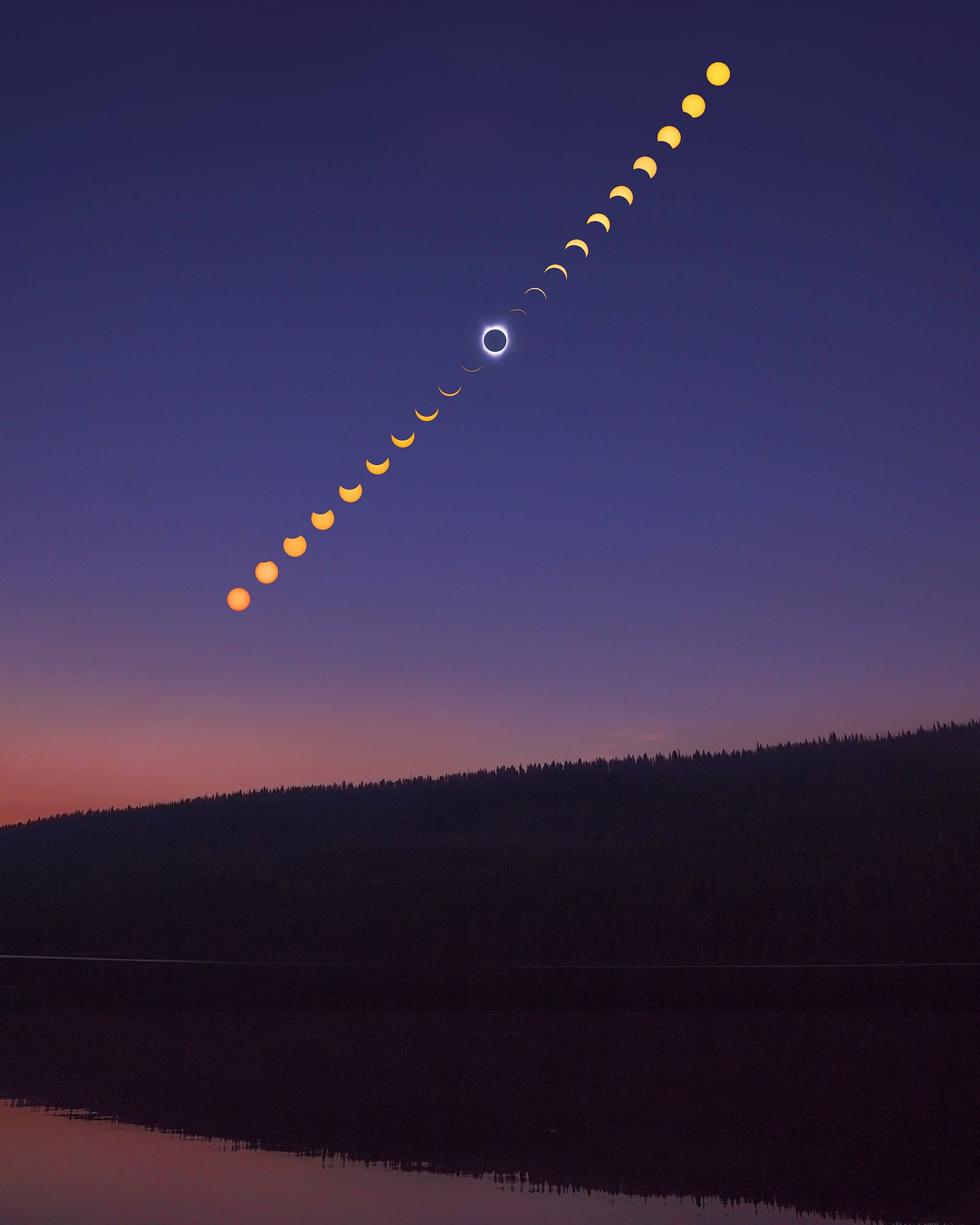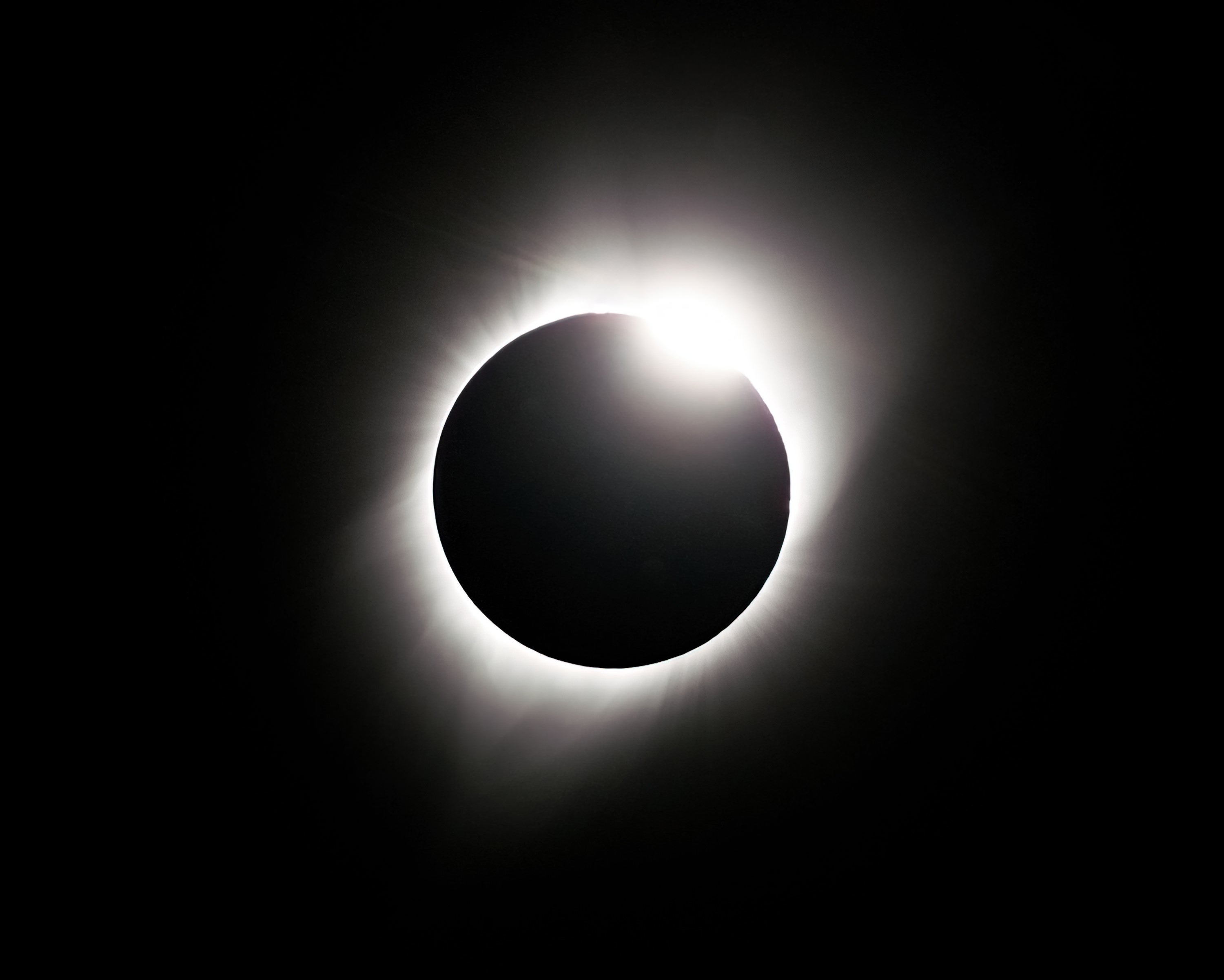On Monday, April 8, 2024, the wildly anticipated total solar eclipse will be visible across the United States. Crowds will flock outdoors to witness it and Sony photographers will snap away to save the moment…but it’s not as simple as just going outside with your camera. There are a few things to do in preparation to ensure you get safe and successful shots. We caught up with Sony Brand Ambassadors Nate Luebbe (@nateinthewild) and Autumn Schrock (@autpops) to get some of their quick tips for preparing to photograph the total solar eclipse. Nate and Autumn are photographers who love nature, traveling, the outdoors, conservation photography, capturing epic landscapes, moonscapes, eclipse and astrophotography. Read their five tips below and ask them your questions during a LIVE AMA on the Alpha Universe Community Forums on March 28 from 3-5pm MT.

Photo by Autumn Schrock
1. Decide On The Right Location For Eclipse Photography
If you want to get a good shot of the solar eclipse, you obviously have to think about where you’re going to photograph it from. Nate and Autumn have a resource recommendation for choosing the best location. “We love using PhotoPills for lining up where the sun will be,” says Nate. “This one might be tough since it’s happening more or less directly overhead, so getting a foreground element is a little more complicated. But PhotoPills is what we use to decide on the right location.”
Autumn adds, "It allows you to see exactly where the sun will rise and set, where the Milky Way will be in the sky at any given place and time, and even where the eclipse will happen. I highly recommend it for all of your planning needs."
2. Plan Out Your Shot List
Throughout the course of the eclipse, there are many different phases and compositions you can capture and create. The entire event happens very quickly, so trying to decide what you want to shoot in the moment is not going to set you up for success. Nate and Autumn note that you should plan out which shots you want to capture in advance so you’re ready to go when the time comes.
Autumn says, “I ask myself, ‘How can I create something and use my skills and my art to show something that will make people who can't see it from where they are in other parts of the world?’ So for me, I'm definitely thinking about capturing the diamond ring effect. I’m also really excited about all of those nuances of the eclipse and capturing all of the cool intricacies of the corona like solar prominences and Baily's beads.
She continues, "Solar prominences are large gas components that extend outward from the Sun's surface. During an eclipse like this, you can see these red masses protruding out from behind the moon. Unlike solar prominences, Baily's beads only occur during a total or annular solar eclipse. When the moon and sun line up, bits of light shine through the moon's features to create a beaded effect. The diamond ring effect, when only one bead is left, is most commonly sought after for the dramatic natural flares it inevitably provides while photographing it."

Photo by Autumn Schrock
3. Pack The Right Lenses
With your shot list ready, you want to make sure you have the proper lenses to be able to create your planned compositions. It’s a good idea to bring a telephoto lens to capture the phases of the eclipse, and a wide lens to capture the landscape if it’s possible. For this eclipse, Nate and Autumn plan on packing the Sony 100-400mm f/4.5-5.6 G Master, Sony 400mm f/2.8 G Master and the Sony 600mm f/4 G Master. Previously Autumn says she’s used lenses like the Sony 24-70mm f/2.8 G Master and Sony 70-200mm f/2.8 G Master.
4. Get A Good Solar Filter
Looking directly at the sun is dangerous for both your eyes and your camera. Nate and Autumn both talk about the importance of having a special solar filter to protect your Sony Alpha, as well as a pair of eclipse glasses to protect your eyes when you aren’t looking through the camera.
“With a DSLR, you could literally blind yourself pointing and shooting at the sun just because the lens magnifies it. It was like looking at the sun through a telescope,” Nate explains. “Thankfully, with the mirrorless camera, you don't have to worry about it blinding you, but it could still definitely fry the camera. At totality there's no need for it, but prior to totality you will still need a good solar filter, even with a mirrorless camera.”
“And don’t forget to put that solar filter on the front of your lens,” adds Autumn. “I’ve heard before of people putting it in the rear drop-in filter, and the sun can literally melt your lens if you put it there. So definitely make sure you put it at the front of your lens.”
5. Don’t Forget To Enjoy It (& Be Flexible)!
Just like in life, in eclipse photography, sometimes not everything goes exactly according to plan. That's where Nate and Autumn say to make sure you also take the time to enjoy the event and to be flexible. You can't control the weather and the cloud cover, and you don't know exactly what is going to happen at that moment. All you can do is prepare the best you can, shoot what you can, observe what you can, and hope you're able to get some good results. If nothing else, at least a good memory! “Just being able to get up close and really see exactly what is going on is really exciting for me,” says Schrock.
See more of Nate & Autumn’s work on Instagram (@nateinthewild) and (@autpops).
Join their LIVE AMA on the Alpha Universe Community Forums on March 28 from 3-5pm MT.



